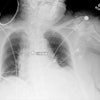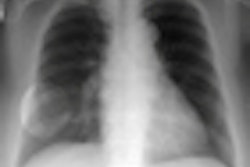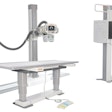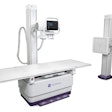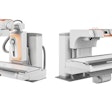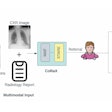Women past the age of menopause who are at risk of osteoporosis should receive regular bone density screening, according to guidelines issued this week by the U.S. Preventive Services Task Force (USPSTF). The new guidelines should make screening available to younger women compared to the task force's previous policy.
The new guidelines say that any woman younger than age 65 whose fracture risk is equal to or greater than that of a 65-year-old white woman should be regularly screened with dual-energy x-ray absorptiometry (DEXA). Under the USPSTF's previous guidelines, issued in 2002, bone density screening was not recommended for any women younger than age 60. The USPSTF this week also reinforced its existing guidelines calling for all women 65 years of age and older to receive regular screening.
The new guidelines have been published on the USPSTF's website, as well as in the January 18 online issue of Annals of Internal Medicine. The bone density recommendations are the first final statement to be published since the USPSTF began a new protocol in July 2010 in which all of its draft recommendation statements are posted for public comment on the USPSTF website prior to being issued in final form.
In the 2002 guidelines, the USPSTF set a threshold of age 60 for women younger than 65 who could be regularly screened for osteoporosis. This week's update paves the way for any woman from menopause to age 65 to get a DEXA study if she has risk factors. The new recommendation includes specific information on the factors that contribute to a heightened 10-year risk for fractures, which the USPSTF calculated using FRAX, the World Health Organization's fracture risk assessment tool.
Based on the tool, a 65-year-old white woman with no other risk factors has a 9.3% risk over 10 years for any osteoporotic fracture. The FRAX tool also predicts 10-year fracture risks for black, Asian, and Hispanic women in the U.S. In general, estimated fracture risks in nonwhite women are lower than those for white women of the same age.
Patient demographics that could lead to higher 10-year fracture risks include:
- A 50-year-old smoker with a body mass index (BMI) less than 21 kg/m2, daily alcohol use, and parental fracture history
- A 55-year-old woman with a parental fracture history
- A 60-year-old woman with a BMI less than 21 kg/m2 and daily alcohol use
- A 60-year-old current smoker with daily alcohol use
"Although the USPSTF recommends using a 9.3% 10-year fracture risk threshold to screen women aged 50 to 64 years, clinicians also should consider each patient's values and preferences and use clinical judgment when discussing screening with women in this age group," the recommendation said.
The USPSTF has given its recommendation a grade B, which is important for insurance coverage as well, according to Andrew Laster, MD, immediate past president and chair of public policy for the International Society for Clinical Densitometry (ISCD) in Middletown, CT.
"Grade B is a strong recommendation," Laster told AuntMinnie.com. "The new healthcare reform bill includes language that says that for all services with a grade of A or B, insurers must provide it without co-pay."
Men are still not included in the new guidance: The USPSTF stated that the current evidence is insufficient to assess the balance of benefits and harms of screening for osteoporosis in men.
"Because of the lack of relevant studies, the USPSTF found inadequate evidence that drug therapies reduce the risk for fractures in men who have no previous osteoporotic fractures. The USPSTF identified the absence of randomized trials of primary fracture prevention in men who have osteoporosis as a critical gap in the evidence," the document said.
New transparency?
The update differs from previous USPSTF guidelines because it is the first final recommendation statement to be published since the USPSTF implemented a new process in July 2010 in which all of its draft recommendation statements are posted for public comment on the USPSTF website prior to being issued in final form. The draft recommendation statement on screening for osteoporosis was posted for public comment from July 6 to August 3, 2010.
Is this new protocol a response to the firestorm created by the USPSTF's 2009 mammography screening guidelines, which dropped a previous recommendation that women ages 40 to 50 get routine screening? Perhaps, according to Laster.
"Whether or not the new process is in response to the [mammography recommendations released in 2009] is unclear, but this type of transparency is definitely a trend," Laster said. "This [new] process is much like what we've seen in the past from Medicare, in which new rules are open to public comment, and all variety of [pertinent] societies and individuals can comment on the draft."
In any case, as the USPSTF emphasized, the recommendation is not absolute, and clinicians need to evaluate their particular patients, according to Laster.
"[Whether to screen for osteoporosis] is an individual decision that needs to be made with a particular patient's needs in mind," he said.
By Kate Madden Yee
AuntMinnie.com staff writer
January 18, 2011
Related Reading
DXA advised for kids at risk of bone disorders: AAP guidelines, January 7, 2011
U.S. guidelines would expand bone mineral density tests to at-risk women under 60, July 6, 2010
Different calcium salts effective for bone building in osteoporosis, June 16, 2010
Rates of osteoporosis screening rise in U.S., May 14, 2010
Automated QCT offers hope for passive osteoporosis screening, December 28, 2009
Copyright © 2011 AuntMinnie.com



